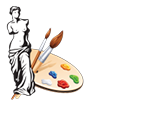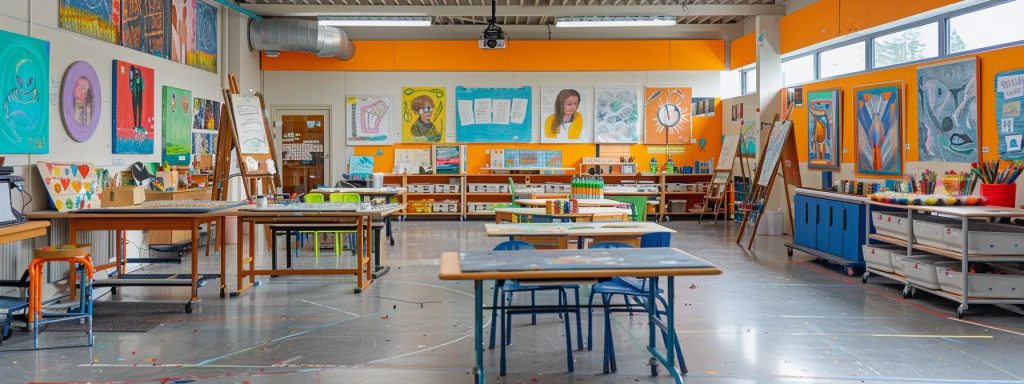
Key Takeaways
- Personalised visual arts education for all ages and skill levels.
- Innovative, engaging teaching methods by experienced instructors.
- Safe, accessible facilities designed to inspire creativity.
- Straightforward enrolment with flexible pricing and trial sessions.
- Advanced projects and an active art community support ongoing growth.
What Makes Creative Art School the Best Choice for Kids’ Painting Classes in Campsie?
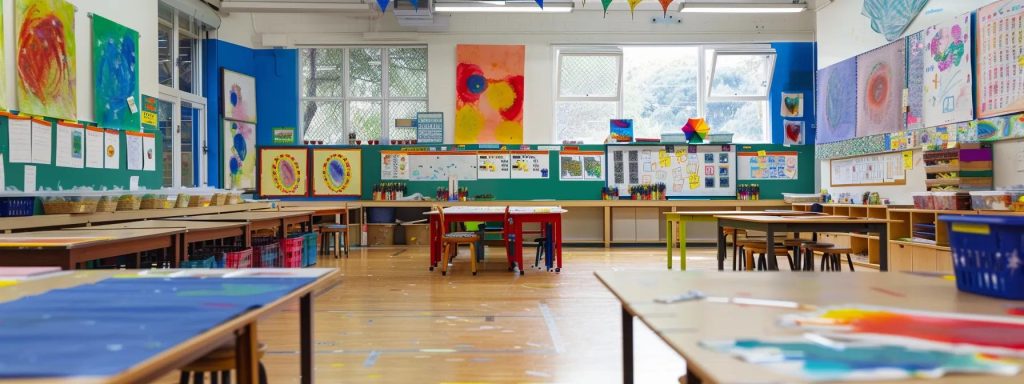
How Do Creative Painting Lessons Foster Children’s Artistic Skills?
The lessons integrate technique, theory, and practice. By exploring various mediums like oil, acrylic, and watercolor, children learn to blend colours, create textures, and form compositions. The step-by-step approach builds skills progressively, enhancing both motor abilities and cognitive problem solving.
Who Are the Experienced Instructors Leading Campsie Painting Classes?
Instructors at Creative Art School are seasoned professionals with strong backgrounds in fine art education. Selected for their ability to relate to young learners, they adapt lessons to individual needs and mentor students in traditional, mixed media, and digital art forms. Their communication skills and patience ensure every student feels valued and motivated.
What Age Groups and Skill Levels Are Supported in Campsie Painting Classes?
The school welcomes children, teenagers, and beginners of all levels. Classes are designed for early learners discovering basic colours and forms, as well as for advanced students ready for abstract and detailed techniques. Group classes are organised by age and ability to provide both appropriate challenge and a fun, social atmosphere.
How Do Art Workshops for Children in Padstow Enhance Creativity and Learning?
Padstow workshops are vibrant hubs where children engage in creative exploration beyond traditional classroom settings. These workshops stimulate the imagination, introduce diverse artistic processes, and promote learning through practical, hands-on activities. Collaborative projects help build confidence and reinforce creative decision-making.
What Types of Painting Techniques Are Taught in Padstow Workshops?
Workshops expose children to essential techniques such as brushwork, colour mixing, palette knife painting, and textured layering. Each session provides practical, hands-on experience while encouraging students to apply creative methods to express their ideas. This variety builds versatility in traditional and contemporary art.
How Are Workshops Designed to Engage Families and Children Together?
Recognising art as a shared experience, workshops are frequently structured to include family participation. Group projects, fun activities, and demonstrations allow parents, siblings, and extended family members to work together. This collaborative approach builds stronger family bonds and deepens art appreciation.
When Are Art Workshops Scheduled for Maximum Convenience in Padstow?
Workshops are scheduled during weekends, school holidays, and evenings to fit busy family routines. Both short-term sessions and extended seasonal courses are offered, along with drop-in options that allow families to try the classes before making a long-term commitment.
Why Do Families Trust Creative Art School: Reviews and Testimonials From Campsie & Padstow
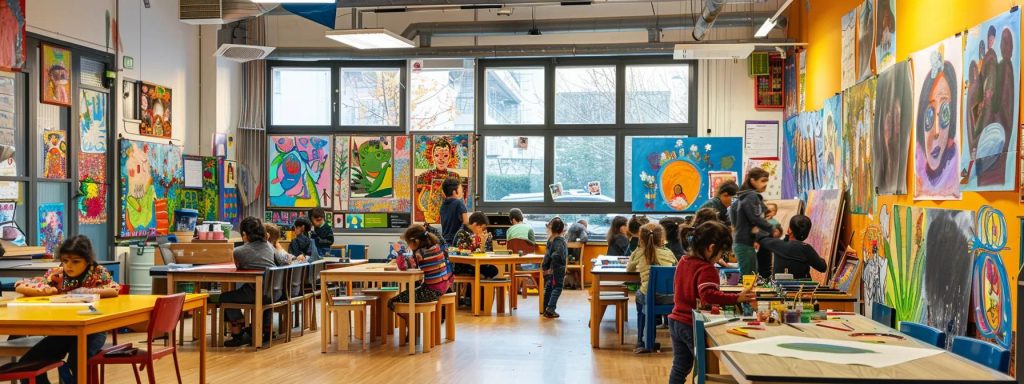
What Do Parents Say About the Quality of Painting Classes?
Parents appreciate the thoughtful, child-centred approach and balanced mix of disciplined learning with creative fun. Many report that their children’s self-esteem has grown along with their artistic skills, thanks to the school’s attention to individual progress and detailed instruction.
How Have Children Benefited From Creative Art School’s Programs?
Through regular classes, students develop fine motor skills, an appreciation for colour and composition, and enhanced visual literacy. Testimonials frequently mention progress from simple doodles to complex, expressive artworks – a transformation credited to the programme’s structured yet flexible design.
Which Features Receive the Highest Praise in Creative Art School Reviews?
Reviewers consistently commend the school’s dedicated instructors, dynamic learning environment, and inclusive curriculum. Advanced projects, innovative workshop formats, and modern, well-equipped facilities further contribute to its high reputation among families.
What Unique Features Set Creative Art School Apart From Other Painting Schools in Campsie & Padstow?
Creative Art School stands out through its holistic and personalised approach that combines rigorous art education with a welcoming, family-friendly atmosphere. Its state-of-the-art studio facilities and curriculum that blends traditional techniques with modern innovations create a vibrant learning community where students continually support one another.
How Does the Family-Friendly Atmosphere Support Learning and Creativity?
The school’s environment is designed to be safe and inspiring, encouraging children to explore new techniques without hesitation. Open communication among students, instructors, and family members fosters collaboration and constructive feedback, reinforcing a sense of belonging and creative encouragement.
What Is Included in the Creative Curriculum for Painting Classes?
The curriculum is a balanced mix of theory and practical work. Students learn colour theory, brush techniques, and composition through interactive lessons. Projects range from watercolour landscapes to abstract mixed-media pieces, and regular exhibits and creative challenges help track progress and celebrate achievements.
How Does Local Focus Improve Accessibility and Relevance for Families?
By focusing on the local communities of Campsie and Padstow, the school ensures its programmes are culturally relevant and easily accessible. Local collaborations with artists and cultural organisations reduce travel time and build a strong support network that reinforces community values.
How Can Families Enrol in Painting Classes and Art Workshops at Creative Art School?

What Are the Enrollment Steps for Campsie and Padstow Families?
Interested families can visit the website or call the enquiry centre for class information, fill out a brief registration form, select a suitable class or workshop, and choose a convenient time slot. The enrolment team then contacts them to confirm details and discuss payment options, ensuring a fast and stress-free process.
Are There Trial Classes or Introductory Sessions Available?
Yes, trial classes and introductory sessions offer families a no-obligation way to experience the school’s teaching style and creative environment before committing to a full programme.
What Are the Pricing Options and Payment Plans for Painting Lessons?
The school offers various pricing plans to suit different budgets, including seasonal discounts and special packages that may combine trial sessions, art materials, and family workshops. Transparent pricing and dedicated financial support ensure that there are no hidden costs.
How Does Creative Art School Support Ongoing Artistic Growth for Children and Families?
Beyond initial classes, the school supports continued artistic development with advanced projects and improvement courses. Regular exhibitions, competitions, and collaborative projects offer students opportunities to showcase their talents and receive constructive feedback, ensuring that creativity continues beyond the classroom.
What Advanced Painting Projects Are Offered for Returning Students?
Advanced projects challenge students with mixed media collages, abstract expressionism, and large-scale mural paintings. These projects refine technical skills while fostering critical thinking and innovation. Guest artists and masterclasses further enrich the advanced curriculum.
How Does the School Foster a Supportive Art Community?
The school builds a strong art community through regular events, group critiques, community projects, and cultural celebrations. This sense of belonging and mutual support inspires continuous artistic growth and shared learning experiences among students and families.
What Opportunities Exist for Family Participation Beyond Classes?
Family art days, weekend workshops, and collaborative projects extend the creative learning experience beyond regular classes. By partnering with local galleries and community centres for art fairs and open studio events, the school ensures that art remains a shared passion that brings families together.
Where Are Creative Art School Locations in Campsie and Padstow, and What Facilities Are Available?
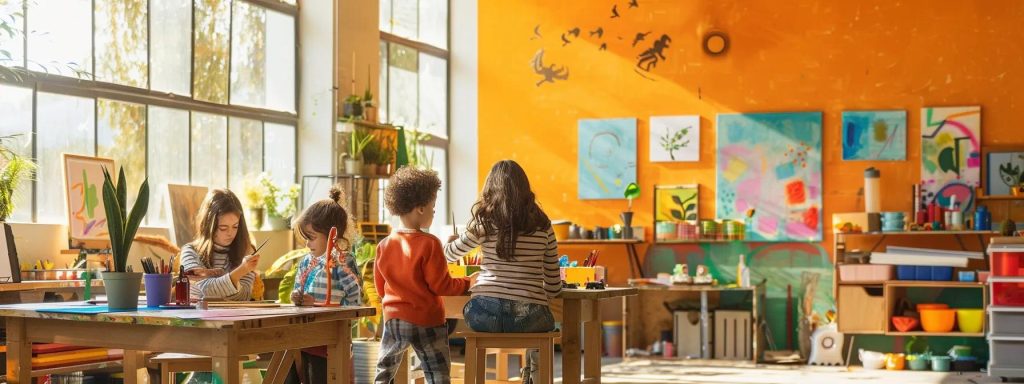
What Are the Features of the Campsie Painting Studio?
The Campsie studio is spacious and well-lit, featuring premium materials, multiple workstations, and dedicated areas for both group and individual projects. Regular updates with cutting-edge art supplies and ample space for family observation create a collaborative learning environment.
How Is the Padstow Workshop Space Designed for Creative Learning?
Padstow’s workshop features flexible seating, interactive whiteboards, and generous display areas for student work. Special attention to lighting and acoustics creates a comfortable yet creative atmosphere, ideal for group and family art sessions.
What Safety and Accessibility Measures Are in Place for Families?
Both centres prioritise safety with secure entry systems, child-friendly furnishings, and clear emergency protocols. Compliance with local accessibility standards, regular safety inspections, and dedicated support ensure that every class operates smoothly and safely.
Final Thoughts
Creative Art School sets a high standard for family-friendly visual arts education in Campsie and Padstow through its comprehensive, supportive, and inspiring approach. With expert instructors, modern facilities, and a balanced curriculum, the school nurtures artistic talent across all age groups. Flexible enrolment, community events, and advanced learning opportunities make it a wise investment in a vibrant, creative future for every child and family.
Frequently Asked Questions
Q: What makes Creative Art School different from other art schools? A: The school offers personalised classes, experienced instructors, modern facilities, and a strong local community focus for an engaging and supportive learning experience.
Q: How can my child benefit from enrolling in painting classes at Creative Art School? A: Enrolment builds fine motor skills, fosters creative expression, and enhances visual literacy, contributing to both academic and personal growth.
Q: Are trial classes available for families interested in the courses? A: Yes, trial classes and introductory sessions provide a risk-free way for families to experience the teaching style and creative environment.
Q: What opportunities exist for families to engage beyond regular classes? A: Families can join in dedicated art days, weekend workshops, community projects, and exhibition events that encourage joint creative expression.
Q: How do I enrol my child in a class at Creative Art School? A: Simply visit the school’s website or contact the enquiry centre, fill out the registration form, select a class, and choose a convenient time to begin your creative journey.

